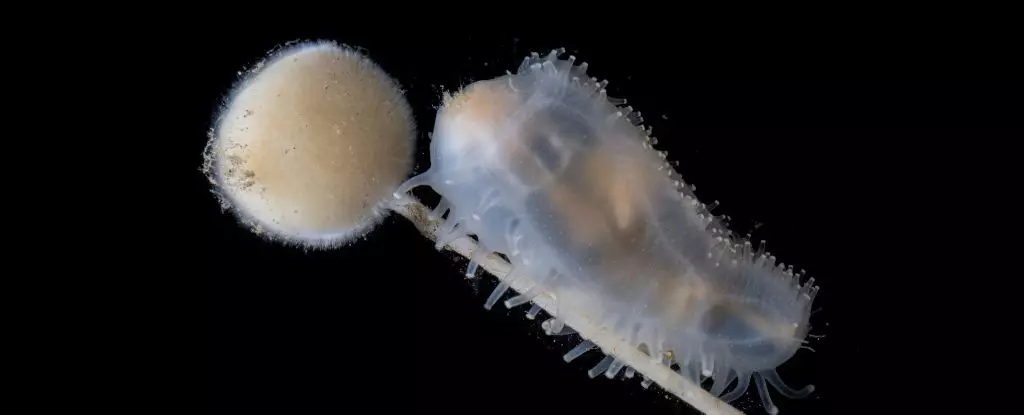The vastness of Earth’s oceans has long remained a formidable frontier for scientists, brimming with mysteries waiting to be unveiled. Recent expeditions, notably the diving escapade led by the Schmidt Ocean Institute aboard its research vessel Falkor (too), push the boundaries of our understanding yet again. This particular 35-day voyage to the remote South Sandwich Islands reveals an alarming truth: our oceans may harbor vibrant ecosystems that are vanishing before we’ve even had the chance to study them. This revelation raises a vital question: are we acting swiftly enough to explore these marine wonders threatened by climate change and industrial exploitation?
The expedition bore witness to once-in-a-lifetime findings of hydrothermal vents, teeming with life that remains undiscovered until now. With unprecedented determination, scientists forged through treacherous conditions—subsea earthquakes, raging winds, and looming icebergs—to bring to light a world that many frankly did not believe existed. Their pressing mission, part of the broader Ocean Census initiative, seeks to catalog marine life before it’s irrevocably altered or passed into extinction. Activism on behalf of these vulnerable ecosystems suddenly feels not only urgent but essential.
Discoveries That Demand Attention
Among the stunning collections of findings were striking vibrational coral gardens located near hydrothermal vents, showcasing species flourishing at depths that defy imagination. The vermillion coral, for instance, glows defiantly amid harsh conditions, embodying resilience. But it’s not merely the corals that demand our gaze; the expedition captured striking imagery of life forms like a mesmerizing nudibranch and unfortunate sights such as a grenadier fish affixed with parasitic copepods. The traumatic existence of this fish, starkly juxtaposed with the beautiful marine life surrounding it, paints a poignant picture of the duality the ocean holds.
The expansiveness of these untouched ecosystems forces us to confront an uncomfortable truth: the modernity we cling to often neglects the beauty and intricacies lying beneath the waves. Each photograph taken is a testament to nature’s silent suffering, a reminder that these wonders face considerable peril from human activities, such as deep-sea mining—a practice that threatens to strip marine environments of their sanctity.
Humanity’s Obligation: Bridging Discovery and Conservation
As marine biologist Michelle Taylor eloquently states, expeditions like these offer an unparalleled glimpse into an incredibly rich yet fragile ecosystem. However, the enchantment of discovery is marred by impending threats. We live in an age where late-night news cycles often fail to illuminate the struggles our planet faces, overshadowed by immediate political issues that seem more urgent. However, these scenic underwater vistas remind us that the preservation of biodiversity should be prioritized alongside terrestrial concerns.
What does it mean to have knowledge of such ecosystems only to allow them to fade into oblivion? The challenge lies in striking a balance between exploration and conservation. Discovering the existence of an array of species, like the elusive dragonfish or snailfish eggs on black coral, comes with an immense responsibility. Once known, the question becomes: how can we protect them from the ever-looming threats that humans perpetuate?
A Call to Action: Time is of the Essence
These remarkable findings should ignite a collective outcry for stricter protections for our ocean environments. They are not simply scientific curiosities; they are vital resources in our fight against climate change, supporting entire marine food webs. The enticing beauty of these findings should not lead to exploitation but rather to an awakening of our commitment towards marine stewardship.
As we stand at the precipice of an ecological crossroads, choices made today will dictate the survival of these diverse ecosystems. Hence, instead of merely celebrating these discoveries, we must propel them into a movement—a call to act against climate lobbying and deep-sea mining. Every moment we delay in addressing these threats is another moment we risk losing invaluable life forms before they receive the recognition they deserve.
In this pivotal era for our oceans, awareness must translate into action. As explorers unveil the interconnected web of life below, it’s up to us to ensure that their struggles are not hushed beneath the waves but rather resonate throughout the halls of power, compelling policymakers to prioritize the preservation of our fragile underwater worlds.



Leave a Reply